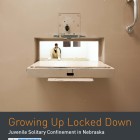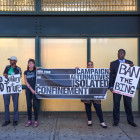
Solitary Reform Shows Power of Brain Science to Change Policy
|
Compelling brain science is finally starting to make its way into the formation of policies — and we need to keep it going.
Juvenile Justice Information Exchange (https://jjie.org/tag/solitary-confinement/page/3/)

Compelling brain science is finally starting to make its way into the formation of policies — and we need to keep it going.

Prolonged isolation has the potential to leave a permanent scar on many individuals, especially juveniles. It is thus time to reconsider the use of solitary confinement in state prisons and jails.

One important aspect of the discussion of the solitary confinement of youth that has received little attention is the role of race and socioeconomic status. Research has demonstrated that young people of color — like Kalief Browder — are more likely to be placed in the juvenile and adult court systems, to remain in them longer and to experience more punitive sanctions than whites.

In a historic moment Monday, President Obama used his executive authority to end the use of solitary confinement for youth in the federal prison system.

The solitary confinement policies for youth vary widely in Nebraska, with stays of weeks and even months permitted in some facilities, says a new report from the ACLU of Nebraska.

“I believe that even if you weren’t mentally ill when you went in, you will be when you get out.”

Which side of the Hudson River you’re on means a “huge difference” for juvenile justice.

It is time for California to take leadership on ending the archaic, inhumane practice of solitary confinement, which the United Nations calls a form of torture.

Juveniles incarcerated in adult prisons face a host of adverse health impacts. New research presented at the American Public Health Association conference shows they are also more than two times as likely to be placed in solitary confinement.
North Carolina and New York are the only two states in the country that try 16- and17-year-olds as adults in their criminal justice systems.
The negative health impacts of adolescents incarcerated in adult prisons are well documented. Adolescents face significantly higher risks of sexual victimization, physical assault and recidivism when they are incarcerated with adults.

Studies have found that subjecting prisoners to solitary confinement makes it more difficult for them to assimilate back into their communities, increasing the risk of recidivism. ... Before Ismael left Rikers two years later, he had spent more than 300 days in “the box,” a six-by-eight-foot cell containing a bunk, sink, toilet, and metal door with no natural light and a small mesh window through which food is delivered. His longest stretch in solitary lasted four months. All of his time incarcerated at Rikers was in pretrial detention — he had not yet been convicted of a crime.